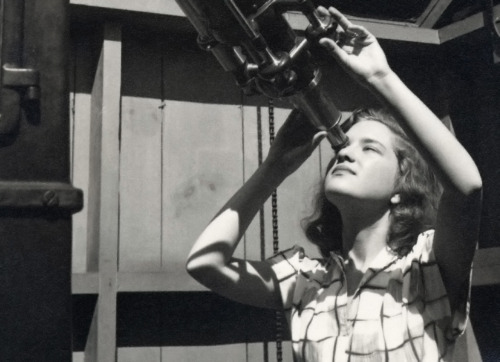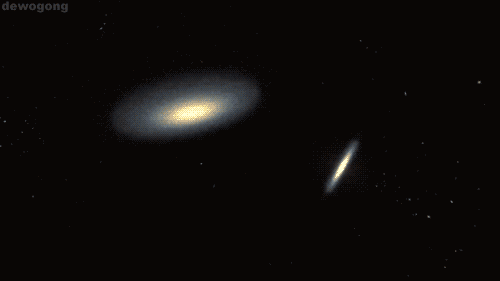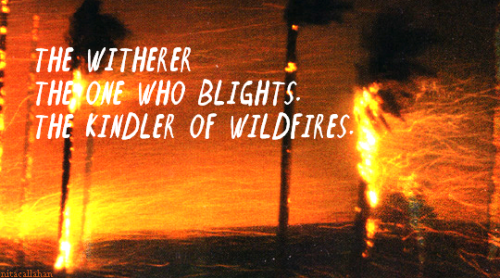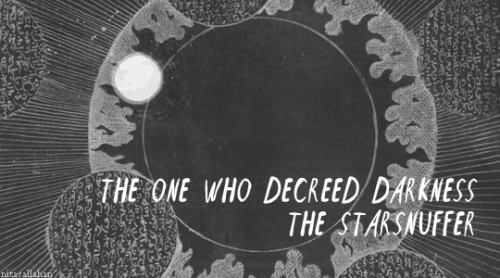Vera Rubin (b. 1928)

Vera Rubin (b. 1928)
When Vera Cooper Rubin told her high school physics teacher that she’d been accepted to Vassar, he said, “That’s great. As long as you stay away from science, it should be okay.”
Rubin graduated Phi Beta Kappa in 1948, the only astronomy major in her class at Vassar, and went on to receive her master’s from Cornell in 1950 (after being turned away by Princeton because they did not allow women in their astronomy program) and her Ph.D. from Georgetown in 1954. Now a senior researcher at the Carnegie Institute’s Department of Terrestrial Magnetism, Rubin is credited with proving the existence of “dark matter,” or nonluminous mass, and forever altering our notions of the universe. She did so by gathering irrefutable evidence to persuade the astronomical community that galaxies spin at a faster speed than Newton’s Universal Law of Gravitation allows. As a result of this finding, astronomers conceded that the universe must be filled with more material than they can see.
Rubin made a name for herself not only as an astronomer but also as a woman pioneer; she fought through severe criticisms of her work to eventually be elected to the National Academy of Sciences (at the time, only three women astronomers were members) and to win the highest American award in science, the National Medal of Science. Her master’s thesis, presented to a 1950 meeting of the American Astronomical Society, met with severe criticism, and her doctoral thesis was essentially ignored, though her conclusions were later validated. “Fame is fleeting,” Rubin said when she was elected to the National Academy of Sciences. “My numbers mean more to me than my name. If astronomers are still using my data years from now, that’s my greatest compliment.”
Sources:
1. http://innovators.vassar.edu/innovator.html?id=68; http://science.vassar.edu/women/
2. http://dspace.mit.edu/handle/1721.1/45424
More Posts from Outofambit and Others
This week’s recommended book has been brought to you by Dozmjir’s entire council of brethren. Not Dozmjir himself, just the council. “So You Want to Be a Wizard” by Diane Duane is the first book in the rather lengthy Young Wizards series. It reminds one at first of one of those light reading books meant to encourage reading in the reluctant. Yet it has a depth to it. Philosophy and religious discourse, magic, the power of friendships, and even the nature of fear and despair. These books are quite heavy for the age group they are marketed for, and yet somehow it is that very quality which makes them so interesting.

SO YOU WANT TO BE A WIZARD HEARNSSEN PUBLISHED BY PHOENIX PRESS 793.4
[click for bigger]

Young Wizards will always be the best YA series because you’ll fall in love with and cry about sentient tears in spacetime, sharks, amalgamations of spheres, computers, gods, macaws, and most importantly you’ll begin to believe fiercely in the beauty and heartbreak of the universe.




‘In Life’s name, and for Life’s sake,I say that I will use the Art for nothing but the service of that Life. I will guard growth and ease pain. I will fight to preserve what grows and lives well in its own way; and I will change no object or creature unless its growth and life, or that of the system of which it is part, are threatened. To these ends, in the practice of my Art, I will put aside fear for courage, and death for life, when it is right to do so—till Universe’s end.’
Top Ten Female Characters from Books or Television
2) Nita Callahan
Favorite quote: “Wow, who sold you that one? I think I’ll go ennoble a couple waffles.” (And basically all of books 6 and 9 where she saves the day)
Nita is my favorite book heroine ever. From the very beginning, I related to her completely for her love of reading and learning, and for being made fun of for it. She is one of the most relatable characters I’ve ever come across. She’s young, but seems so much older- whether because of the wizardry and the responsibility that comes along with it, or because everyone always feels like they’re more mature than the world thinks they are. She shows us that you don’t have to be a respected adult to change (or to save) the world. She’s insecure, selfish, moody (like when she snaps at Kit for no reason), but she also can admit when she’s messed up and learns from her mistakes. She considers giving up wizardry and her best friend to save her mother. She almost goes through with sacrificing herself to save the world (even though she wasn’t too happy about it when she first found out that’s what she got herself into) when she was what, 12/13? She’s quick in a crisis, and very smart. In A Wizard Alone, she taught me so much about grieving, and I wished those books had been there for me when my own mom passed away (though I was probably a bit too young then). Not to mention that in A Wizard Alone she singlehandedly saves the day, using what the Lone Power tried to use to bring her down to bring It down, and save Darryl and Kit. She also nearly singlehandedly saves the day in A Wizard of Mars, not letting her jealousy or anger get in the way of what needed to be done, while also being rather bad ass about it. Nita taught me that it’s okay to be angry- you can use it to your advantage. She helped to teach me that what people think of you doesn’t matter. The people who made fun of/beat up Nita didn’t know that she helped save their lives more than once, and she never let them color her view of humanity. She never once doubted that their lives weren’t worth saving, despite how they treated her. She showed me that being a good sister doesn’t mean you can’t fight and tease each other sometimes. She went from being very dependent on Kit- always giving her power to him, helping him rather than the other way around- to being a very good, independent wizard who stands on her own and stands tall.
‘fairest and fallen, greetings and defiance’ is still the best Stock Greeting For Our Ancient Enemy ever. it’s got everything. (1) you’re hot (2) you’re evil (3) respect tho (4) anyway i’m here to kick your ass

What are white holes? Many people are familiar with black holes as a 3-D hole that alters time and space where not even light can escape. However, what is our knowledge on white holes? Well, as your might suspect, white holes are the exact opposite of black holes. They expel matter into space at intense speeds with immense energy. Some cosmologists believe that on the other side of a black hole is a white hole. An interesting point that can either excite or disappoint you is that white holes cannot be entered from the outside. This means that there may never be physical proof of a white hole and will only stay in theories and mathematics.
Nevertheless, there is a paper written in 2012 that argued that the Big Bang was a white hole itself. Unlike black holes, white holes cannot be observed continuously and can only be observed at the time of the event. It also connects a new class called y-ray bursts to white holes. If you would like to read this interesting paper check out http://arxiv.org/pdf/1105.2776v2.pdf. Hopefully one day we can learn more about white holes and the mysteries they hold. The universe is fascinating and has secrets that are waiting to be unlocked the question is how much money are we willing to spend on the universe?
Take action today: http://www.penny4nasa.org/take-action/
-
 anotherlesbiandad reblogged this · 1 year ago
anotherlesbiandad reblogged this · 1 year ago -
 anotherlesbiandad liked this · 1 year ago
anotherlesbiandad liked this · 1 year ago -
 profounddiyanimehands liked this · 1 year ago
profounddiyanimehands liked this · 1 year ago -
 omgsevereengineerbouquet reblogged this · 2 years ago
omgsevereengineerbouquet reblogged this · 2 years ago -
 yakisobareikilifspirt reblogged this · 2 years ago
yakisobareikilifspirt reblogged this · 2 years ago -
 deadlysunlight liked this · 2 years ago
deadlysunlight liked this · 2 years ago -
 daphnectar liked this · 2 years ago
daphnectar liked this · 2 years ago -
 sylvansylvain liked this · 2 years ago
sylvansylvain liked this · 2 years ago -
 goingbluetoo liked this · 3 years ago
goingbluetoo liked this · 3 years ago -
 afk-brb liked this · 3 years ago
afk-brb liked this · 3 years ago -
 animatedhomunculus liked this · 3 years ago
animatedhomunculus liked this · 3 years ago -
 ginnyinindy liked this · 3 years ago
ginnyinindy liked this · 3 years ago -
 runaruuu reblogged this · 3 years ago
runaruuu reblogged this · 3 years ago -
 runaruuu liked this · 3 years ago
runaruuu liked this · 3 years ago -
 skyloop reblogged this · 3 years ago
skyloop reblogged this · 3 years ago -
 blueotterkitty reblogged this · 3 years ago
blueotterkitty reblogged this · 3 years ago -
 niveuslepus reblogged this · 3 years ago
niveuslepus reblogged this · 3 years ago -
 sighing-is-a-song liked this · 4 years ago
sighing-is-a-song liked this · 4 years ago -
 cubaby liked this · 4 years ago
cubaby liked this · 4 years ago -
 hattsravenandwritingdesk reblogged this · 4 years ago
hattsravenandwritingdesk reblogged this · 4 years ago -
 blueotterkitty liked this · 4 years ago
blueotterkitty liked this · 4 years ago -
 badass-at-cuddling reblogged this · 4 years ago
badass-at-cuddling reblogged this · 4 years ago -
 aguacatito reblogged this · 5 years ago
aguacatito reblogged this · 5 years ago -
 cnssciarc reblogged this · 5 years ago
cnssciarc reblogged this · 5 years ago -
 toast-notcooked reblogged this · 5 years ago
toast-notcooked reblogged this · 5 years ago -
 toast-notcooked liked this · 5 years ago
toast-notcooked liked this · 5 years ago -
 tough-darling liked this · 5 years ago
tough-darling liked this · 5 years ago -
 la-reine-des-enfers liked this · 5 years ago
la-reine-des-enfers liked this · 5 years ago -
 lunatheenemy liked this · 5 years ago
lunatheenemy liked this · 5 years ago -
 grounder-in-training reblogged this · 5 years ago
grounder-in-training reblogged this · 5 years ago -
 chants-de-lune reblogged this · 5 years ago
chants-de-lune reblogged this · 5 years ago -
 just-bitching-about reblogged this · 6 years ago
just-bitching-about reblogged this · 6 years ago -
 just-bitching-about liked this · 6 years ago
just-bitching-about liked this · 6 years ago -
 qomrades reblogged this · 6 years ago
qomrades reblogged this · 6 years ago -
 till-the-end-of-forever-eh reblogged this · 6 years ago
till-the-end-of-forever-eh reblogged this · 6 years ago -
 till-the-end-of-forever-eh liked this · 6 years ago
till-the-end-of-forever-eh liked this · 6 years ago -
 screwthisnaming reblogged this · 6 years ago
screwthisnaming reblogged this · 6 years ago -
 lavenderbookdragon reblogged this · 6 years ago
lavenderbookdragon reblogged this · 6 years ago -
 pickledkelpie reblogged this · 6 years ago
pickledkelpie reblogged this · 6 years ago -
 pickledkelpie liked this · 6 years ago
pickledkelpie liked this · 6 years ago -
 triientalis reblogged this · 6 years ago
triientalis reblogged this · 6 years ago -
 kineticbismuth reblogged this · 6 years ago
kineticbismuth reblogged this · 6 years ago -
 tartly-sweet liked this · 6 years ago
tartly-sweet liked this · 6 years ago -
 argentum-19 reblogged this · 6 years ago
argentum-19 reblogged this · 6 years ago -
 argentum-19 liked this · 6 years ago
argentum-19 liked this · 6 years ago
A personal temporospatial claudication for Young Wizards fandom-related posts and general space nonsense.
288 posts


